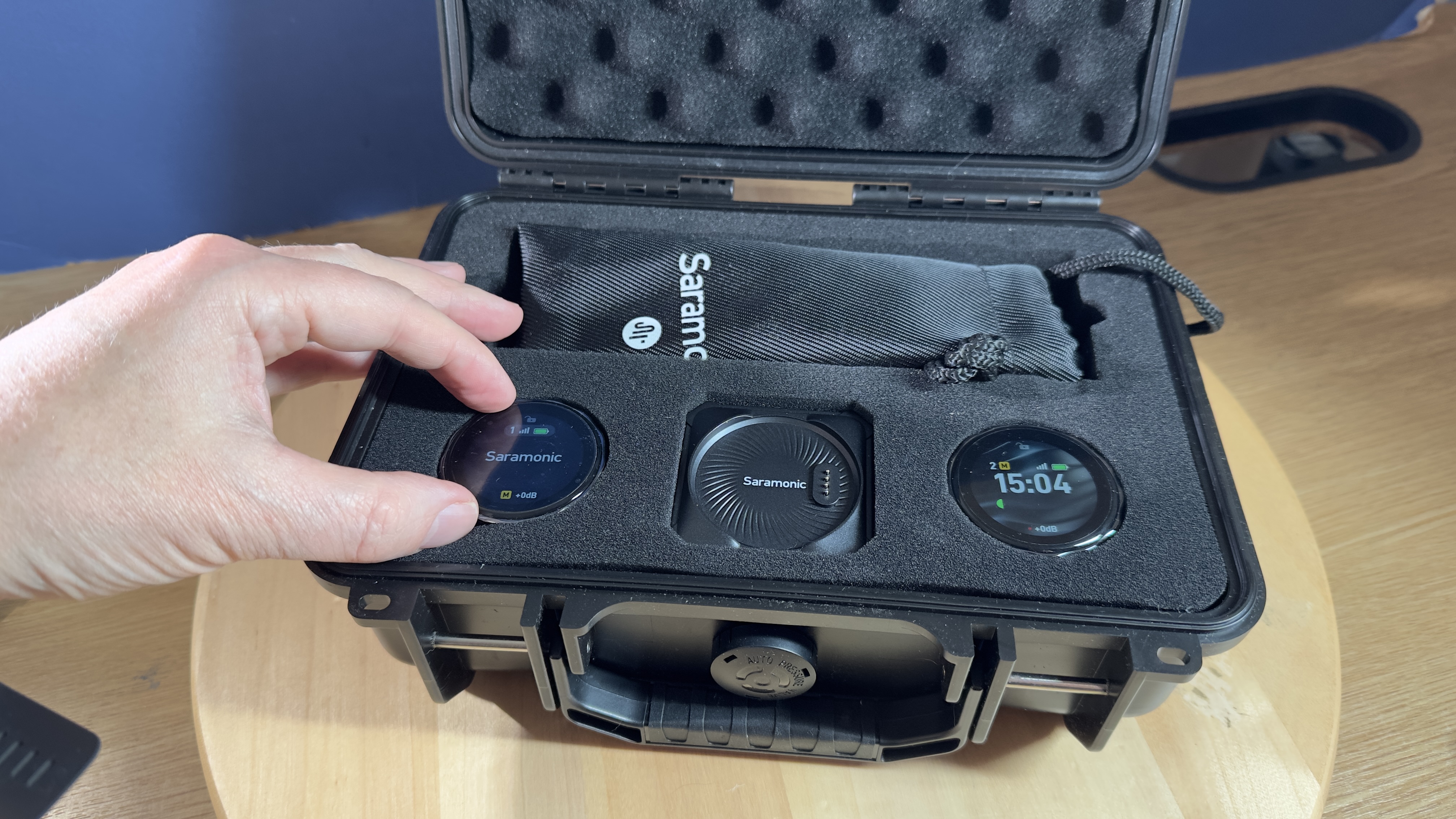
The BlinkMe is the latest model in the Blink range of wireless microphones from Saramonic. We’ve enjoyed reviewing Saramonic Blink mics before, such as the budget-friendly Blink500 B2 and the more expensive Blink500 Pro B2. The cheaper Blink500’s transmitters were simple plastic units that had crude level indicator lights that weren’t particularly useful or functional. The more expensive Blink500 Pro’s two transmitters had small OLED displays that enabled you to get a better sense of sound level strength.
• Read More: check out our guide to the best wireless microphones.
The new BlinkMe has been radically re-designed to give you much more control of its transmitters’ functions thanks to a touch-sensitive color LCD screen that encompasses the front of each circular transmitter. This screen enables you to more easily control a range of properties directly from each transmitter, such as adjusting the gain or activating a very useful Onboard Recording feature - more on that later.

Specifications
Receiver specifications
Digital Frequency: 2.4GHz
Modulation: GFSK
Output: -60 dBV to -20 dBV
Range: 100m
Connection: 3.5mm jack
Battery: up to 24 hours
Weight: 70g (2.47 oz)
Transmitter specifications
Digital Frequency: 2.4GHz
Modulation: Digital
Microphone: Omnidirectional polar pattern
Sample Rate: 48kHz
Range: 100m
Connection: 3.5mm jack
Battery: up to 6-8 hours (depending on whether Onboard recording is enabled)
Memory: 8GB
Weight: 30g (1.06 oz)
Key Features
The transmitters’ colorful LCD touch screen is a welcome key feature of the BlinkMe kit. This makes it much easier to control the behavior of each transmitter in relation to input levels and noise reduction.
An even more useful key feature is Onboard Recording. Wireless mics are great for freeing you from the constraints of hard-wired lavalier mics that are plugged directly into your recording device, be it a DSLR or smartphone. Wireless mics such as the BlinkMe transmit your voice to a receiver attached to your recording device, giving your subject complete freedom of movement.
However, every wireless mic I’ve tested has suffered from signal dropout. This can happen when the transmitter gets too far away from the receiver. If the transmitter loses line of sight from the receiver then the signal can also drop out. This can happen when the subject turns away from the camera and their body blocks the signal from the transmitter to the receiver.
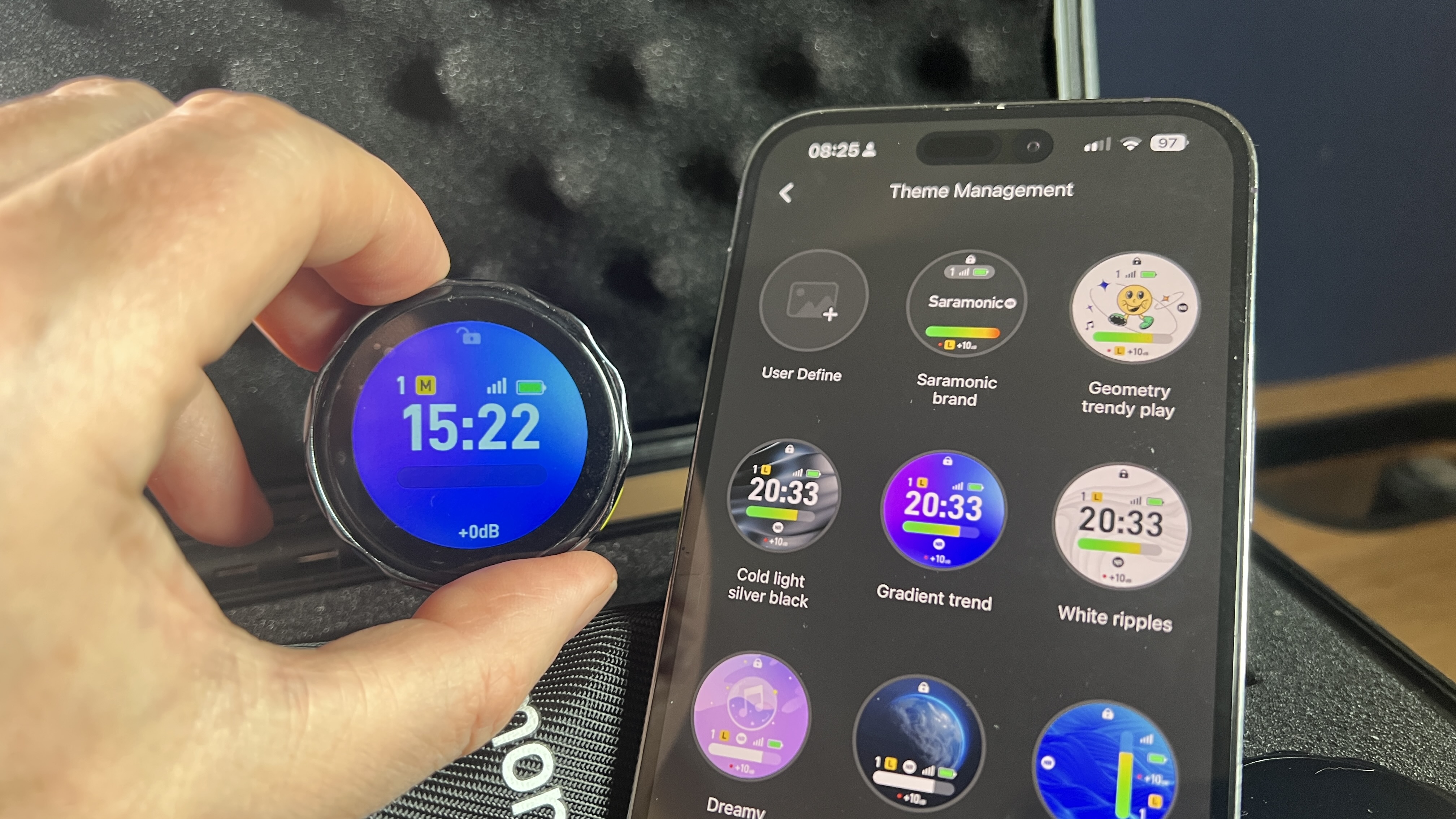
The BlinkMe’s ingenious Onboard Recording feature enables you to record your voice directly into the transmitter as a .wav file while simultaneously broadcasting sound to the receiver. If there’s any signal drop out then you can recover the missing audio from the transmitter’s onboard .wav file. This is an incredibly useful feature, especially if you’re talking to camera from a distance and can’t monitor the sound from the receiver’s headphone socket.
If you record at 48KHz/16bit sampling rate you can capture a generous 22 hours on the transmitter’s storage space (or 15 hours at 48KHz/32bit ) which is more than enough for a typical shoot. As a bonus, there’s also a secondary safety track recorded at -6dB. This is useful if your mic’s sound levels are too high and there’s distortion due to peaking. It’s worth noting that if you enable Onboard Recording it will shorten the transmitter’s ability to broadcast from 8 hours to 6.
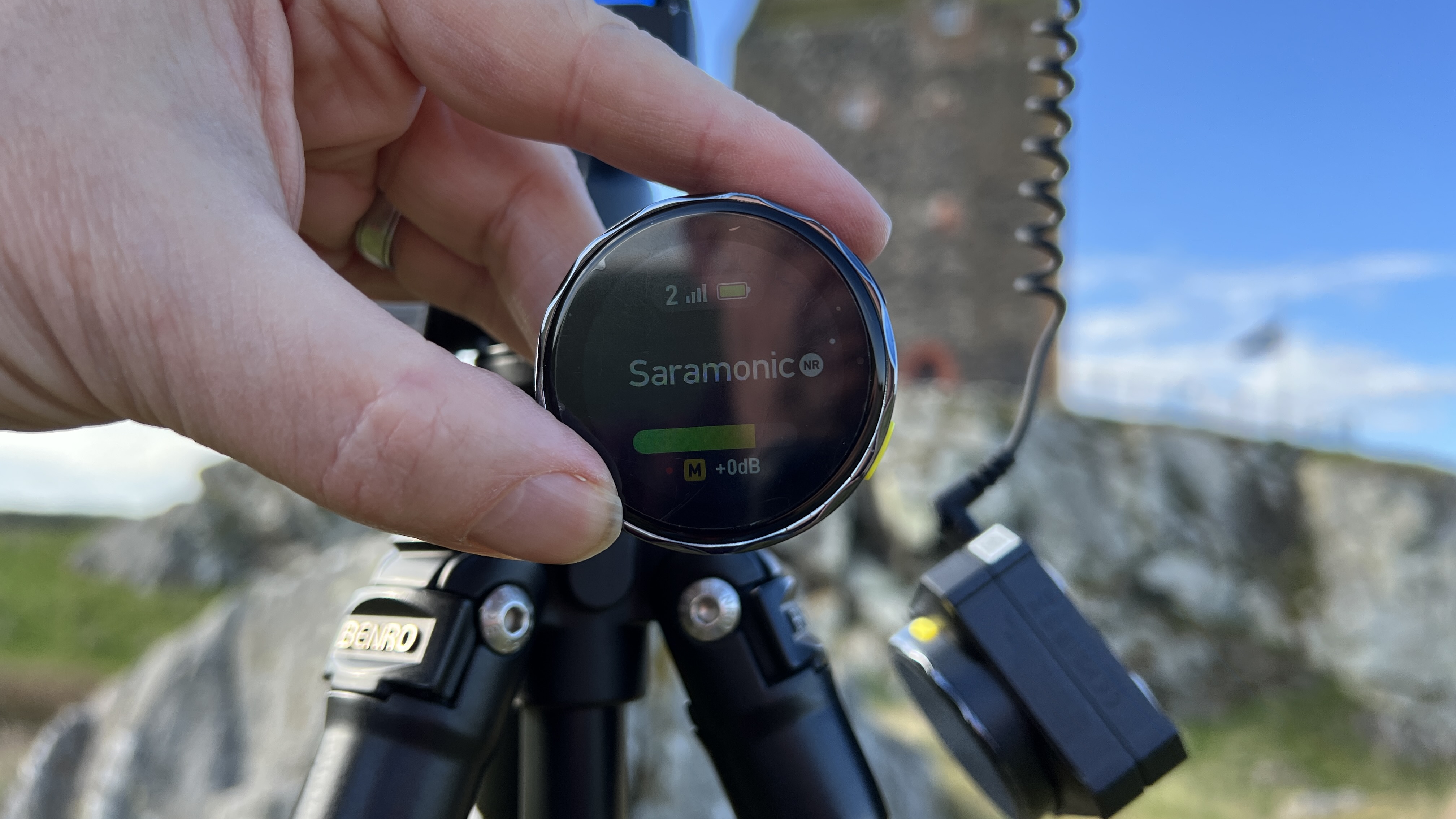
Another welcome key feature is the BlinkMe’s compatibility with the Saramonic app. You can use the app to record video while keeping an eye on sound levels from the transmitters. You can also use the app to customize the theme on each transmitter (to change the information displayed on each mic’s touchscreen). The app also enables you to customize how each button behaves on the transmitters and receivers and you can also use it to toggle on Noise Reduction and tweak the frequency of the low-cut filter.
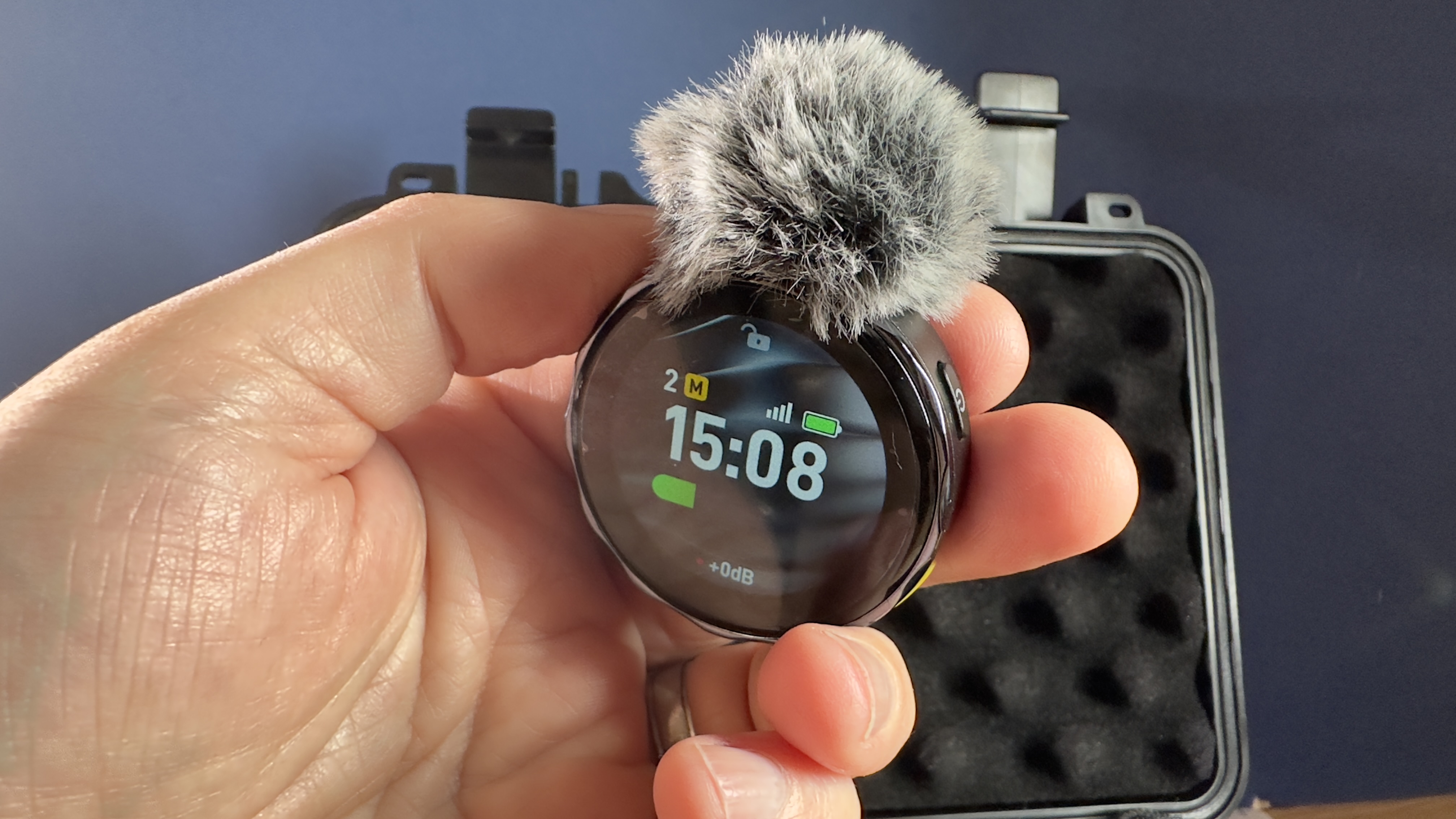
Build & Handling
The BlinkMe ships in a robust plastic flight case that has foam inserts designed to accommodate the two disc-shaped transmitters and the plastic receiver, plus a host of accessories such as magnets that you can place behind a subject’s shirt and then clamp the transmitter onto them via its magnetic base.
There’s also a pair of mounts that you can clip to a subject’s lapel and then attach a transmitter to them magnetically. The receiver doubles up as a charger for the two transmitters. The transmitters are heavier than previous Blink models so they can cause clothing to sag a little, especially when attached to the magnetic clip mount.
If the flight case is too chunky to fit into your camera bag then you can pop the BlinkMe’s key components into a supplied (and branded) soft bag that’s easier to carry.

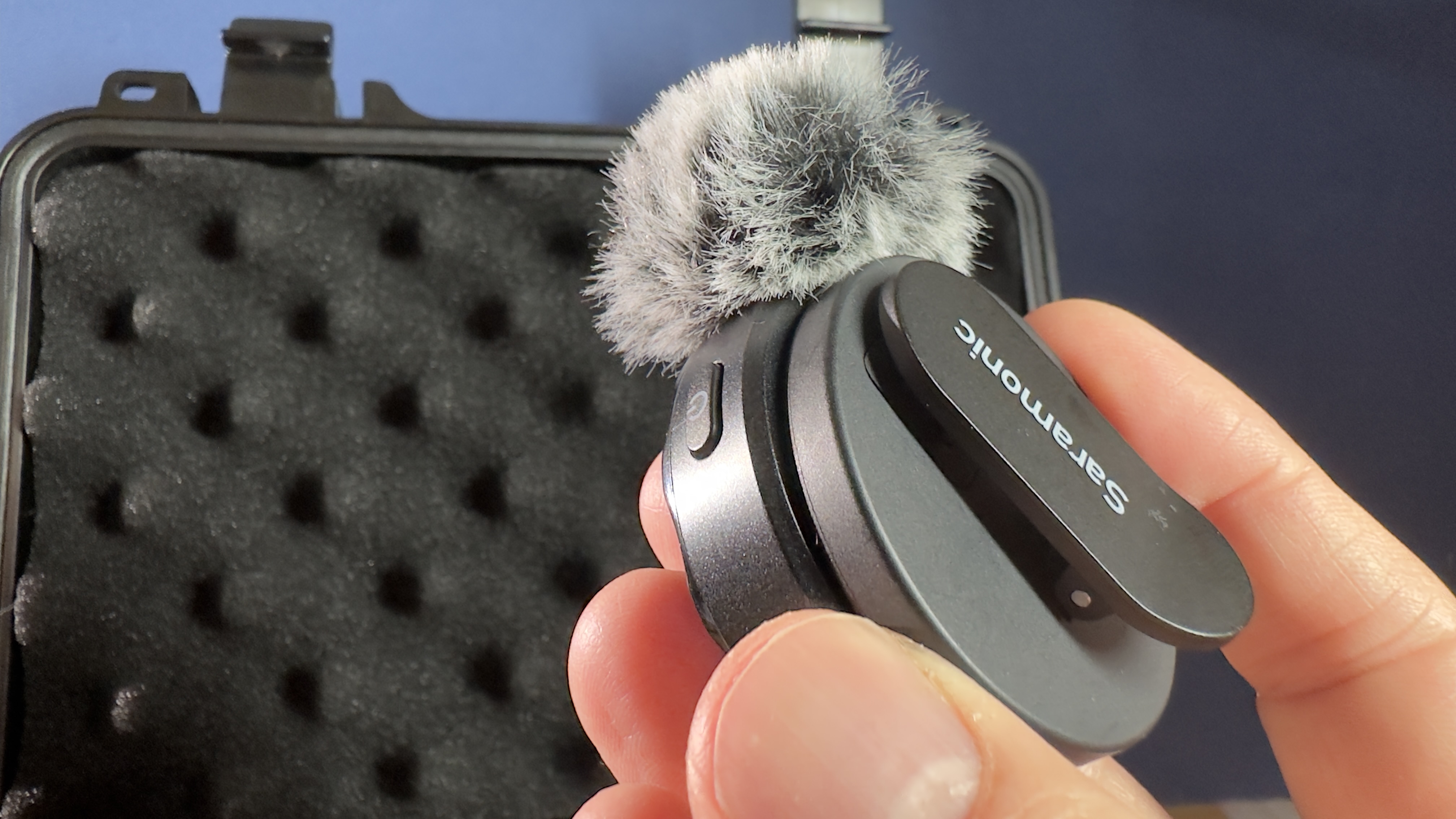
Performance
I tested the BlinkMe over a long bank Holiday weekend in a variety of scenarios. I clipped the two transmitters to members of my family and recorded their chat as they walked and clambered around the rugged Scottish coastline. The strong magnetic mounts kept the mics attached to their subjects at all times which was a relief as it would have been difficult to find the transmitters if they had fallen off on the pebbled beach.
The sound quality was excellent even at a distance. To give the BlinkMe a bigger challenge I drove to the windswept Smailholm Tower in the Scottish Borders. I attached the windshield to my transmitter’s omnidirectional mic which was initially a bit of a challenge. However, once I learned to insert and twist the fluffy windshield it stayed securely attached. As I was standing on top of a hill the wind gusted constantly but the windshield kept the rumble down to a negligible minimum.
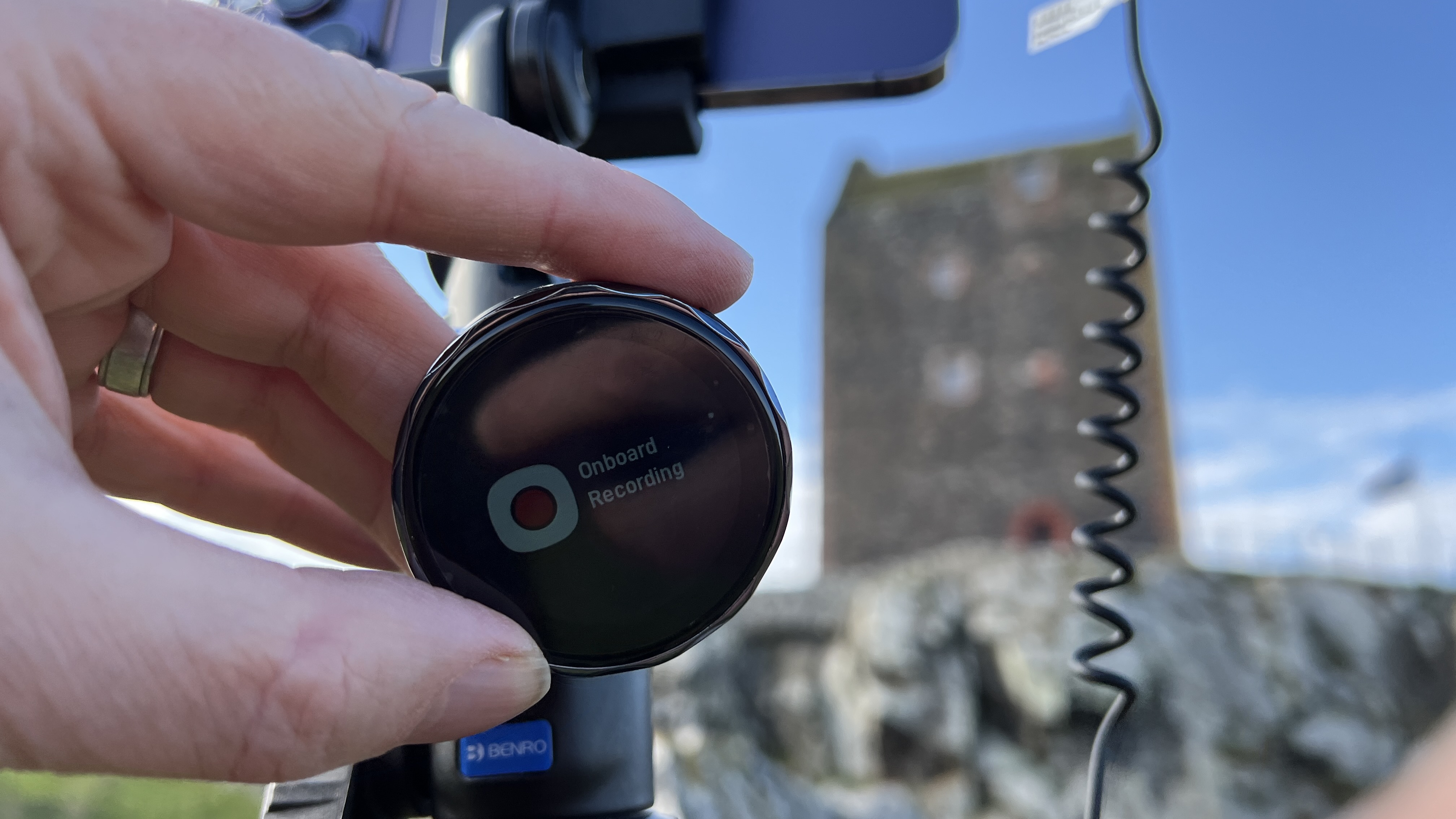
I can’t imagine getting better results from other mics that I’d tested, especially in such extreme wind. Check out my supporting video to hear the quality of the sound produced by the BlinkMe in very windy conditions. There are no post-production noise reduction tweaks applied to that video. What you hear is what the BlinkMe captured. Once I tapped the transmitter’s yellow noise reduction button then the negligible wind rumble vanished completely. Often in-mic noise reduction can make the voice sound thinner and flatter but there was no drop in the voice quality captured by the BlinkMe when Noise Reduction was activated.
To test the BlinkMe’s ability to transmit over a distance I left my iPhone (with the BlinkMe receiver attached to it) on a hill and walked to the stone tower on another hill (see video). I was 100% certain that my voice would drop out when I walked past a thick stone wall and lost sight of the receiver. On playing back the footage I was astonished to hear an uninterrupted signal, so there was no need to replace missing sound gaps with the transmitter's onboard recorded .wav file.
If you do need to access the onboard audio recordings simply pop the transmitter onto the receiver then attach the receiver via USB-C to your PC to see a list of .wav files. You can then use these recordings to plug any gaps in the recorded footage using a post-production video editing app such as Final Cut Pro.
Verdict
The BlinkMe is an astonishingly effective wireless mic kit. Despite my best attempts, I couldn’t get the signal between the transmitter and the receiver to drop out (so I didn’t need to use the mic’s Onboard Recording feature to plug any sound gaps).
Each transmitter’s large touchscreen enables you to tweak levels and activate noise reduction in a few swipes and taps. The magnetic mounts hold the mics securely (but you can easily remove the mic to tweak its settings before re-attaching it to your subject).
If you’re in the market for a wireless mic kit then the Saramonic BlinkMe is a must-buy, though as each transmitter is quite large (and therefore hard to hide) the BlinkMe will be better suited to documentaries rather than dramas.
Read More: Find the right microphone for your video with our guides to the best microphone for vlogging and filmmaking, the best lavalier microphone, and the best iPhone microphone.







